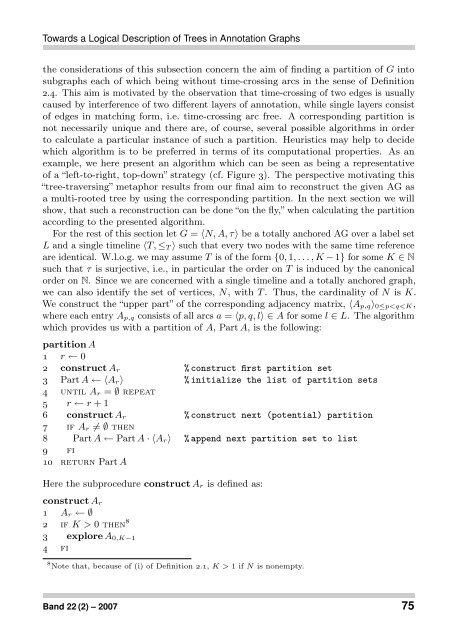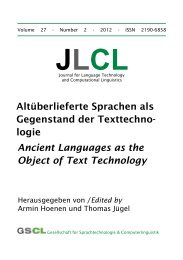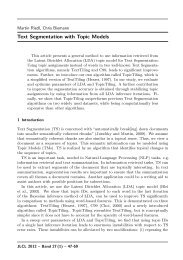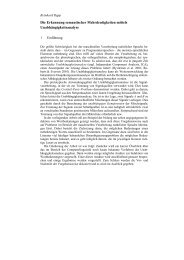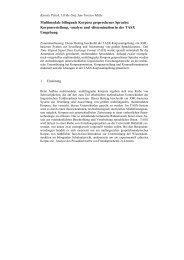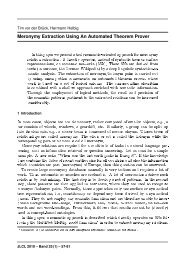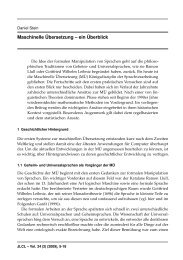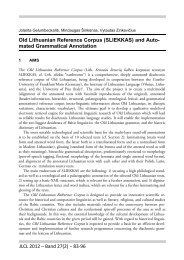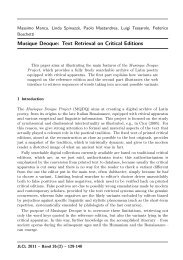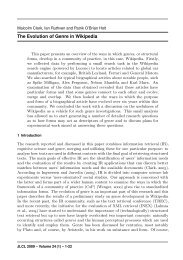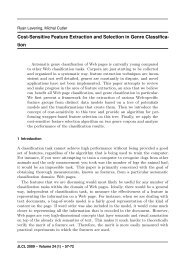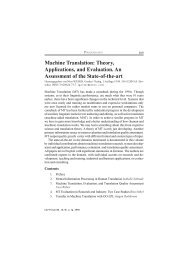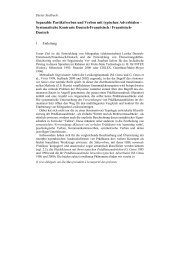Towards a Logical Description of Trees in Annotation Graphs - JLCL
Towards a Logical Description of Trees in Annotation Graphs - JLCL
Towards a Logical Description of Trees in Annotation Graphs - JLCL
Create successful ePaper yourself
Turn your PDF publications into a flip-book with our unique Google optimized e-Paper software.
<strong>Towards</strong> a <strong>Logical</strong> <strong>Description</strong> <strong>of</strong> <strong>Trees</strong> <strong>in</strong> <strong>Annotation</strong> <strong>Graphs</strong><br />
the considerations <strong>of</strong> this subsection concern the aim <strong>of</strong> f<strong>in</strong>d<strong>in</strong>g a partition <strong>of</strong> G <strong>in</strong>to<br />
subgraphs each <strong>of</strong> which be<strong>in</strong>g without time-cross<strong>in</strong>g arcs <strong>in</strong> the sense <strong>of</strong> Def<strong>in</strong>ition<br />
2.4. This aim is motivated by the observation that time-cross<strong>in</strong>g <strong>of</strong> two edges is usually<br />
caused by <strong>in</strong>terference <strong>of</strong> two different layers <strong>of</strong> annotation, while s<strong>in</strong>gle layers consist<br />
<strong>of</strong> edges <strong>in</strong> match<strong>in</strong>g form, i.e. time-cross<strong>in</strong>g arc free. A correspond<strong>in</strong>g partition is<br />
not necessarily unique and there are, <strong>of</strong> course, several possible algorithms <strong>in</strong> order<br />
to calculate a particular <strong>in</strong>stance <strong>of</strong> such a partition. Heuristics may help to decide<br />
which algorithm is to be preferred <strong>in</strong> terms <strong>of</strong> its computational properties. As an<br />
example, we here present an algorithm which can be seen as be<strong>in</strong>g a representative<br />
<strong>of</strong> a “left-to-right, top-down” strategy (cf. Figure 3). The perspective motivat<strong>in</strong>g this<br />
“tree-travers<strong>in</strong>g” metaphor results from our f<strong>in</strong>al aim to reconstruct the given AG as<br />
a multi-rooted tree by us<strong>in</strong>g the correspond<strong>in</strong>g partition. In the next section we will<br />
show, that such a reconstruction can be done “on the fly,” when calculat<strong>in</strong>g the partition<br />
accord<strong>in</strong>g to the presented algorithm.<br />
For the rest <strong>of</strong> this section let G = 〈N, A, τ〉 be a totally anchored AG over a label set<br />
L and a s<strong>in</strong>gle timel<strong>in</strong>e 〈T, ≤ T 〉 such that every two nodes with the same time reference<br />
are identical. W.l.o.g. we may assume T is <strong>of</strong> the form {0, 1, . . . , K − 1} for some K ∈ N<br />
such that τ is surjective, i.e., <strong>in</strong> particular the order on T is <strong>in</strong>duced by the canonical<br />
order on N. S<strong>in</strong>ce we are concerned with a s<strong>in</strong>gle timel<strong>in</strong>e and a totally anchored graph,<br />
we can also identify the set <strong>of</strong> vertices, N, with T . Thus, the card<strong>in</strong>ality <strong>of</strong> N is K.<br />
We construct the “upper part” <strong>of</strong> the correspond<strong>in</strong>g adjacency matrix, 〈A p,q〉 0≤p 1 if N is nonempty.<br />
Band 22 (2) – 2007 75


